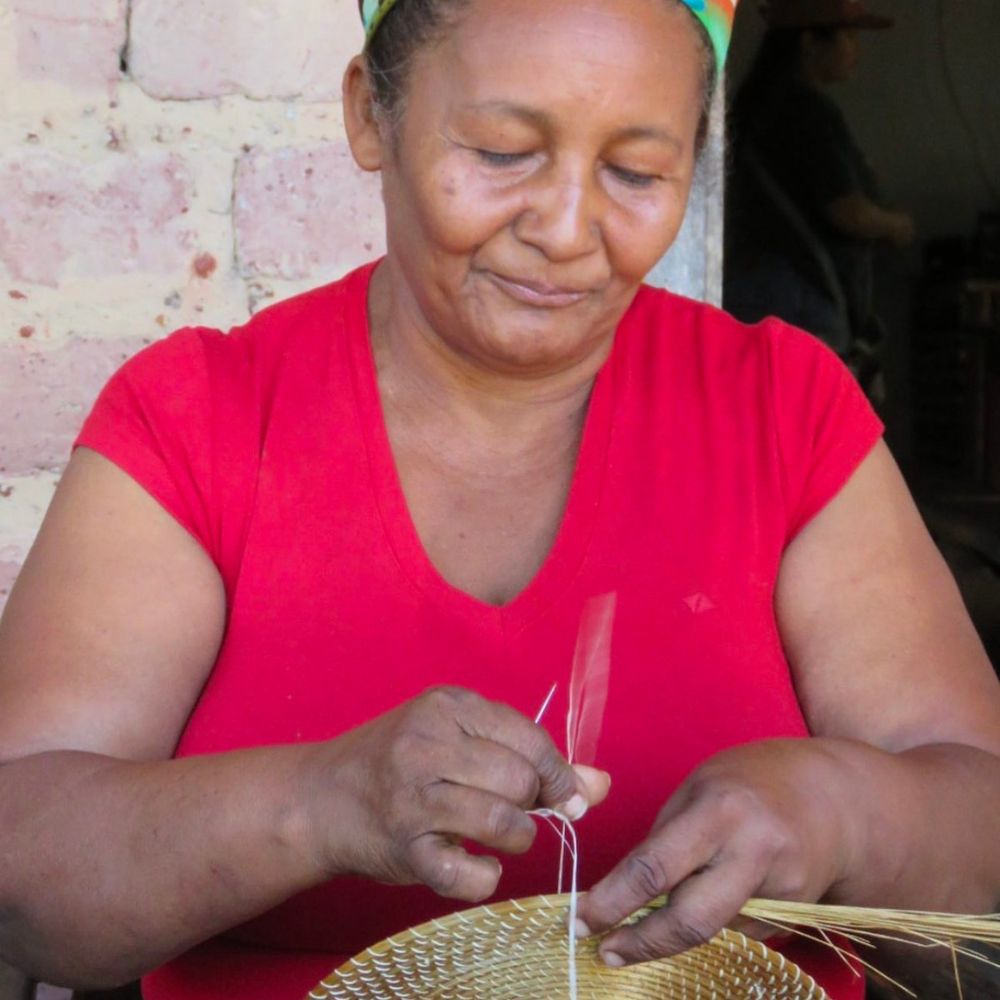The Mumbuca community, nestled within Brazil's Jalapão region in the state of Tocantins, stands as a testament to resilience, cultural fusion, and sustainable craftsmanship. Its origins trace back to the late 19th and early 20th centuries when freed African slaves from Bahia sought refuge and a new beginning in the remote landscapes of northern Goiás, now Tocantins. Settling in what would become Mumbuca, these Afro-Brazilian pioneers established a quilombola community—a settlement founded by descendants of escaped slaves—deeply rooted in traditions of self-sufficiency and communal harmony
The name "Mumbuca" is derived from an indigenous term referring to a type of blue bee prevalent in the area, reflecting the community's intertwined African and indigenous heritage. This cultural amalgamation is evident in the community's practices and crafts, notably the art of weaving with golden grass, or "capim dourado.
According to local oral history, the discovery of capim dourado's potential is credited to Laurina Pereira Matos, a descendant of the community's founders. While traversing the verdant fields, Laurina was captivated by the shimmering golden hues of the grass. Inspired, she crafted the first known item—a hat for her husband to shield him from the sun. This innovative use of capim dourado laid the foundation for a rich tradition of artisanal craftsmanship.
The weaving techniques employed by the Mumbuca artisans were influenced by indigenous peoples, particularly the Xerente tribe, who shared their knowledge during interactions in the 1930s. This exchange enriched the community's craft, leading to the creation of a diverse array of items such as jewelry, baskets, and decorative pieces.
Over time, capim dourado became more than a material; it evolved into a symbol of Mumbuca's identity and economic vitality. The shimmering crafts gained national and international acclaim, transforming the community into a hub for sustainable fashion and ethical craftsmanship. To preserve this invaluable resource, regulations were established, permitting the harvesting of capim dourado only between September 20 and November, ensuring ecological balance and the plant's regeneration.
Today, Mumbuca thrives as a vibrant community where tradition and sustainability coalesce. The legacy of Laurina's ingenuity endures, with artisans continuing to weave stories of heritage, resilience, and beauty into each golden strand, sharing a luminous piece of their culture with the world.
The Mumbuca community, nestled within Brazil's Jalapão region in the state of Tocantins, stands as a testament to resilience, cultural fusion, and sustainable craftsmanship. Its origins trace back to the late 19th and early 20th centuries when freed African slaves from Bahia sought refuge and a new beginning in the remote landscapes of northern Goiás, now Tocantins. Settling in what would become Mumbuca, these Afro-Brazilian pioneers established a quilombola community—a settlement founded by descendants of escaped slaves—deeply rooted in traditions of self-sufficiency and communal harmony
The name "Mumbuca" is derived from an indigenous term referring to a type of blue bee prevalent in the area, reflecting the community's intertwined African and indigenous heritage. This cultural amalgamation is evident in the community's practices and crafts, notably the art of weaving with golden grass, or "capim dourado.
According to local oral history, the discovery of capim dourado's potential is credited to Laurina Pereira Matos, a descendant of the community's founders. While traversing the verdant fields, Laurina was captivated by the shimmering golden hues of the grass. Inspired, she crafted the first known item—a hat for her husband to shield him from the sun. This innovative use of capim dourado laid the foundation for a rich tradition of artisanal craftsmanship.
The weaving techniques employed by the Mumbuca artisans were influenced by indigenous peoples, particularly the Xerente tribe, who shared their knowledge during interactions in the 1930s. This exchange enriched the community's craft, leading to the creation of a diverse array of items such as jewelry, baskets, and decorative pieces.
Over time, capim dourado became more than a material; it evolved into a symbol of Mumbuca's identity and economic vitality. The shimmering crafts gained national and international acclaim, transforming the community into a hub for sustainable fashion and ethical craftsmanship. To preserve this invaluable resource, regulations were established, permitting the harvesting of capim dourado only between September 20 and November, ensuring ecological balance and the plant's regeneration.
Today, Mumbuca thrives as a vibrant community where tradition and sustainability coalesce. The legacy of Laurina's ingenuity endures, with artisans continuing to weave stories of heritage, resilience, and beauty into each golden strand, sharing a luminous piece of their culture with the world.
We're always happy to chat and help answer any questions you may have!
Please note, we try our best to respond to all inquiries within 48 hours, Monday - Friday.
Be the first to hear about exclusive offers and latest updates!
